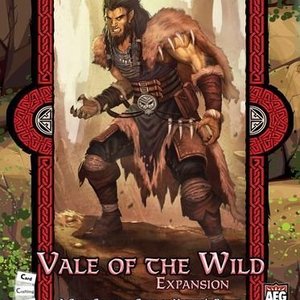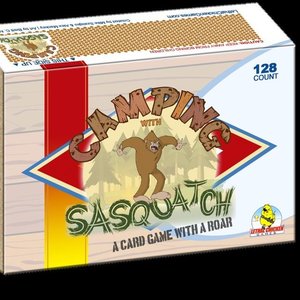Red Otter (340 KP) rated Mystic Vale: Vale of the Wild in Tabletop Games
May 30, 2019

Baby School - Voice & Sound Flash Card,Piano,Drum
Education and Music
App
Baby School - All in 1 (Flash Card, Voice & Sound Card, Piano, Drum) is a Great Apps which helps...
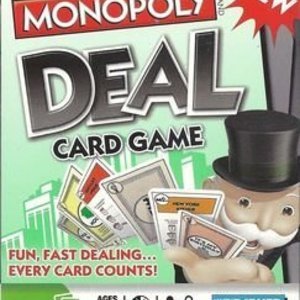
Monopoly Deal Card Game
Tabletop Game
(from the box): The fast-paced, addictive card game where your luck can change in the play of a...
Purple Phoenix Games (2266 KP) rated Dragons Wild in Tabletop Games
Feb 1, 2021
Dragons Wild is a trick-taking game very similar to the old standard, Rummy. So like its predecessor players are trying to rid their hands of cards in order to signal the end of the game. Where this version separates is in the little details that are absent from Rummy.
DISCLAIMER: We were provided a prototype copy of this game for the purposes of this review. These are preview copy components, and I do not know for sure if the final components will be any different from these shown. Also, it is not my intention to detail every rule in the game, as there are just too many. You are invited to download the rulebook, back the game through the Kickstarter campaign launching February 2, 2021, or through any retailers stocking it after fulfillment. -T
To setup choose a dealer and a scorer (different players). The dealer will shuffle the entire deck of cards, save for the scoring cards, and deal each player seven cards. The draw deck is placed in the middle of the table and the dealer flips the top card to create the discard pile. The scorer finds the reference score card and places the dragon token on or near the “Round 1, Score 8 per card” text. The game may now begin!
Generally, the game is played much like Rummy where players are attempting to lay down melds of cards containing either runs (1, 2, 3, 4, etc) or sets (2, 2, 2 of different suits). Once a player has a meld in front of themselves they may play their cards onto other players’ melds. Players must discard a card at the end of each turn, and play continues in this manner until a player runs out of cards.
Dragons Wild, however, adds a few twists to pump up the play of traditional Rummy. Each player will need to keep track of their point totals as they will change with each play of a card. Should a player lay a meld on Round 1 they score eight VP for each card laid. In Round 2 cards are worth seven points each. Round 3 each card is worth six points and so on until Round 8 (or more) where each card is worth just one point.
Another way in which Dragons Wild differs from its older cousin is in the buying of cards (as far as I remember – I’m no Rummy expert). On their turn the active player must draw a card from either the top of the draw deck or the top of the discard pile. However, before the active player chooses, should another player wish to buy the face-up discard card the active player decides to allow or disallow the buy. With a successful buy the buying player takes the discarded card as well as the top card of the draw deck as payment. A player may buy as many as three cards in this fashion for each new active player.
Also, Dragons Wild offers a slight rule change for Wild cards in melds. Every time I have played Rummy in my lifetime any Wild is up for grabs as long as it can be replaced with a legal card from any player’s hand on their turn. This is not the case in Dragons Wild, as only Wild cards that hang on the end of a RUN of cards may be taken, replaced, or moved to the other end by the active player.
The game ends once one player is able to rid their entire hand of cards and still have one card to discard at the end of their turn. Players then total their scores from all cards played, scoring points differently depending on the Round in which they were laid. Other players still possessing cards then subtract the NUMBER of cards still held from their entire score, not their values. The player with the most points after this scoring phase is the winner!
Components. Again, this is a prototype copy of the game, and I am completely unsure which, if any, components will be upgraded as a result of a successful Kickstarter campaign. That said, I can comment on a couple things. First, the art style. While it is not my cup of tea (dragons have tea parties, right?) I can see where others may quite enjoy its fancifulness and whimsy. The game is very colorful, and I do appreciate that quite a lot. The cards are laid out well, and each suit is a different species of fantastic beast (though I rarely knew which was which – I just paid attention to the background color in the corners of the cards mostly). So I have no real problems with the components at all, I just wish for different art. The designer was nice enough to send along a print of a purple phoenix with this copy, which is super rad of her, and it looks great. Maybe she will add them into the final version…
Gameplay is familiar, like I stated earlier, because I would think most people have played Rummy or a variation of it at some point. In fact, my family was big into Rummikub growing up, and my grandparents were big into Rummy proper. So this was somewhat nostalgic for me while also bringing a few house rules and art that is different from a boring deck of normal playing cards.
The rules are not at all difficult, so learning, teaching, and playing have not seemed to be an issue at all here. If players have all played a version of Rummy before then this one will fly pretty quickly. It is a simple, fast, and slightly unique version of Rummy that would be nice to keep around if you need to wait on another player to arrive and they are 10 minutes away, or as a palette cleanser between games. Definitely a filler game, and not at all a bad one!
If you are looking for a differently-themed Rummy replacement with a twist, I recommend checking out Dragons Wild. It’s cute, quick, and has dragons, for Pete’s sake. Consider backing the Kickstarter campaign or asking your LFGS to stock it upon release.

Custom Heroes
Tabletop Game
Custom Heroes is a card-crafting, climbing trick game in which plastic cards are added to sleeves in...
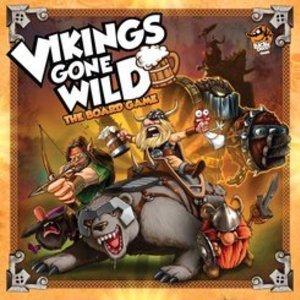
Vikings Gone Wild
Tabletop Game
Each turn in Vikings Gone Wild — a deck-building, resource management game based on the online...
BoardGames CardGames DeckBuildingGames VikingGames

Hardback
Tabletop Game
Hardback is a deck-building word game, a prequel to Paperback. As an aspiring 19th-century novelist,...
BoardGames WordGames BetterThanScrabble PaperbackUpgrade
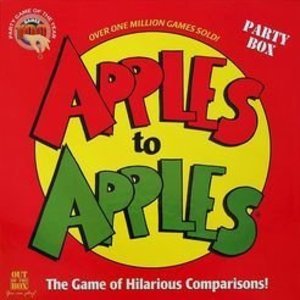
Apples to Apples
Tabletop Game
This infamous wild card and party game provides instant fun for 4 to 10 players! It's as easy as...
Purple Phoenix Games (2266 KP) rated Camping with Sasquatch in Tabletop Games
Jun 18, 2019 (Updated Jun 25, 2019)
Camping with Sasquatch is a super silly set collection, hand management, card shedding game in the party game genre featuring, well, Bigfoot. You are dealt a hand of cards of various suits (s’mores, hiking, fishy fishy, etc) and from the large draw pile of remaining cards are revealed three cards. On your turn you must draw a card from the draw pile, and play two cards from your hand. You score points by adding cards to the revealed cards on the table to make sets of suits Rummy style. So you can have a set of 3 like-cards, or a run(?) of 3 different cards, with Sasquatch cards in the same suit being wild. When you complete a set of cards on the table, you claim the set and put the cards in your scoring pile. Each card in your scoring pile is worth one victory point. The first player to shed his hand to zero triggers the end game, and the player with the most victory points is the winner. Duh.
Here’s what makes this game a little different and a little more interesting. The Sasquatch cards are wild. They can be used in a set or a run. Easy. However, you can play a Sasquatch card by itself to the table by slapping it down and calling out what suit it is: “Sasquatch Swimming!” When someone does that the other players must frantically slap the Sasquatch with an appropriate suit-matching card from their hand. If they cannot or if they are the last to do so they are awarded with all the cards that had just been played. In a shedding game, adding cards to your hand is always no bueno. This, however, leads to hilarity at the table, but also frustration if you play with bad sports, or uninterested opponents.
Components. This is a card game. The cards are of good quality, and the art is campy and cartoony. I quite like the art style, but some people I played with had mixed opinions on it. What I did appreciate was the one page folded rulesheet with full color Sasquatch poster on the back. I like light games with non-confusing rules. However, on that subject, I couldn’t find anywhere that it stated we could use more than the three slots to play our cards to next to the draw pile, even though there is a graphic that shows more slots in a dashed outline. We initially played the game with just the three slots available and it was a drag, man. Once we allowed some interpretation of the rules to open up more card slots, the game flowed quite a bit more easily and we enjoyed it much more.
Overall, this is just a silly game of shedding with a unique theme that we all liked. The Sasquatch slap aspect of the game gave it a nice little bump in interest for us, but ultimately we agreed that it was light and fun, but not one we will think to bring out very often. I would like to recommend this, but I will do so to a particular situational scenario. If you are ending your game night and just need a super light nightcap to help you tie one on, then pull out the ‘Squatch. He may eat your hot dogs, but he’s just trying to make a living too. Purple Phoenix Games gives this one a hairy 15 / 30.

Knaves Over Queens
George R.R. Martin, Emma Newman, Paul Cornell, Charles Stross, Marko Kloos, Mark Lawrence, Peter Newman, Melinda M. Snodgrass, Peadar Ó Guilín, Kevin Andrew Murphy and Caroline Spector
Book
The return of the famous shared-world superhero books created and edited by George R. R. Martin,...
